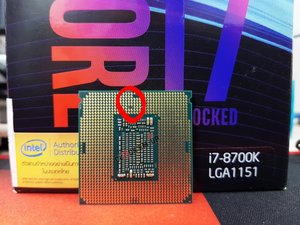SPARTAN VI
[H]F Junkie
- Joined
- Jun 12, 2004
- Messages
- 8,760
Some folks at HWbot have got their i7 8700K working on Asrock Z170 boards with a pencil mod and custom UEFI. Instructions are in the HWbot OP linked. This isn't the same mod from December with an i3 8350K on a Z170 board, there were some issues/sacrifices in regards to PCIe functionality.
Would be tempted to try this if it can ever work with my Asrock Z170 ITX board.. it's like the 771 to 775 mod, which I couldn't resist either.


Yes, there's an old (i.e. stale) discussion on this in the motherboard sub-forum, but I feel we may get more takers from folks willing to try this mod in the Intel sub-forum.
Mod point is below, connect both pads with tin/silver ink etc.
Flash bios http://picx.xfastest.com/nickshih/asrock/Z17MOCF751A.rar with kabylake CPU, shut down insert coffee and go.
XP working fine
Would be tempted to try this if it can ever work with my Asrock Z170 ITX board.. it's like the 771 to 775 mod, which I couldn't resist either.


Yes, there's an old (i.e. stale) discussion on this in the motherboard sub-forum, but I feel we may get more takers from folks willing to try this mod in the Intel sub-forum.
Last edited:
![[H]ard|Forum](/styles/hardforum/xenforo/logo_dark.png)